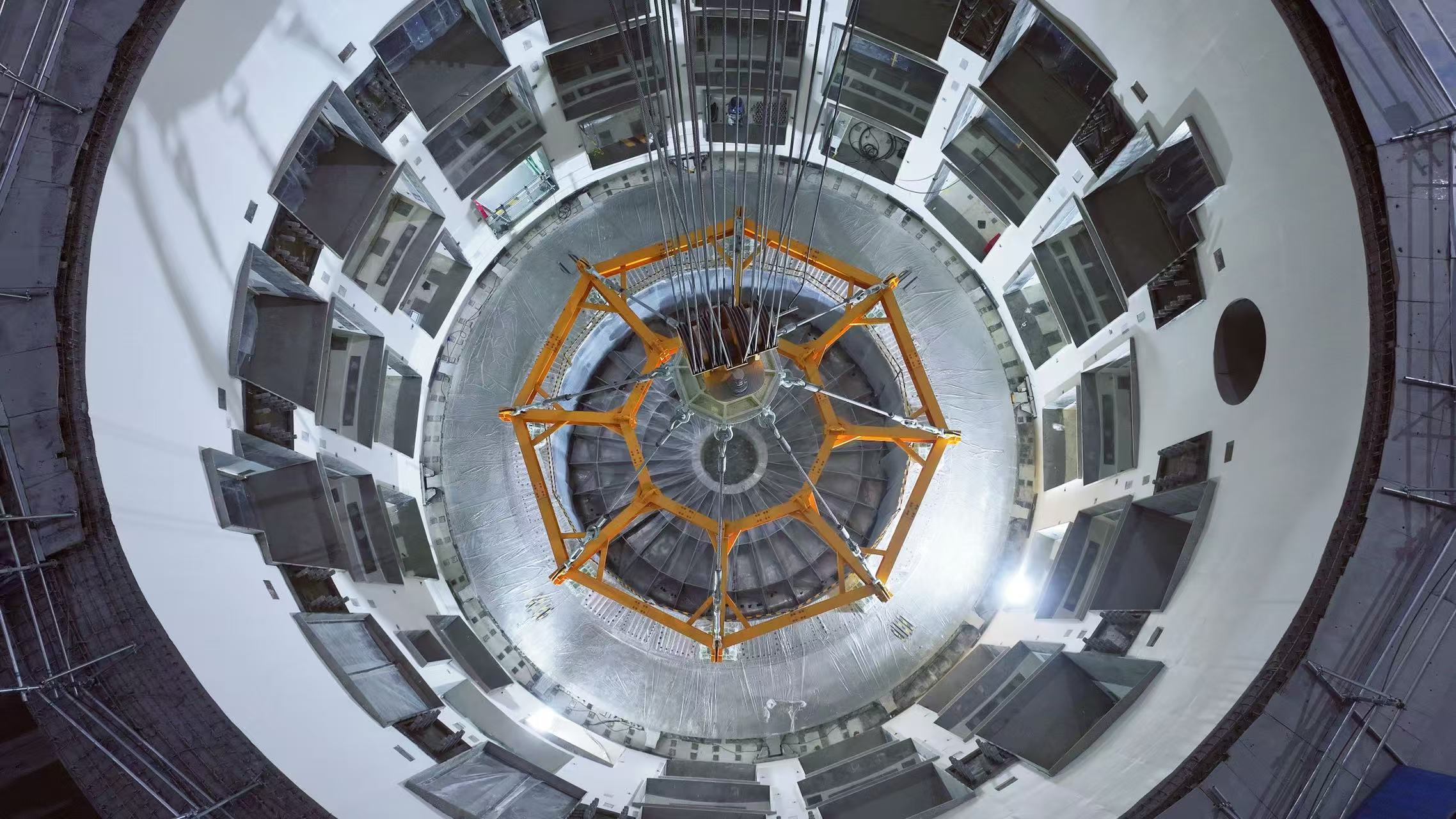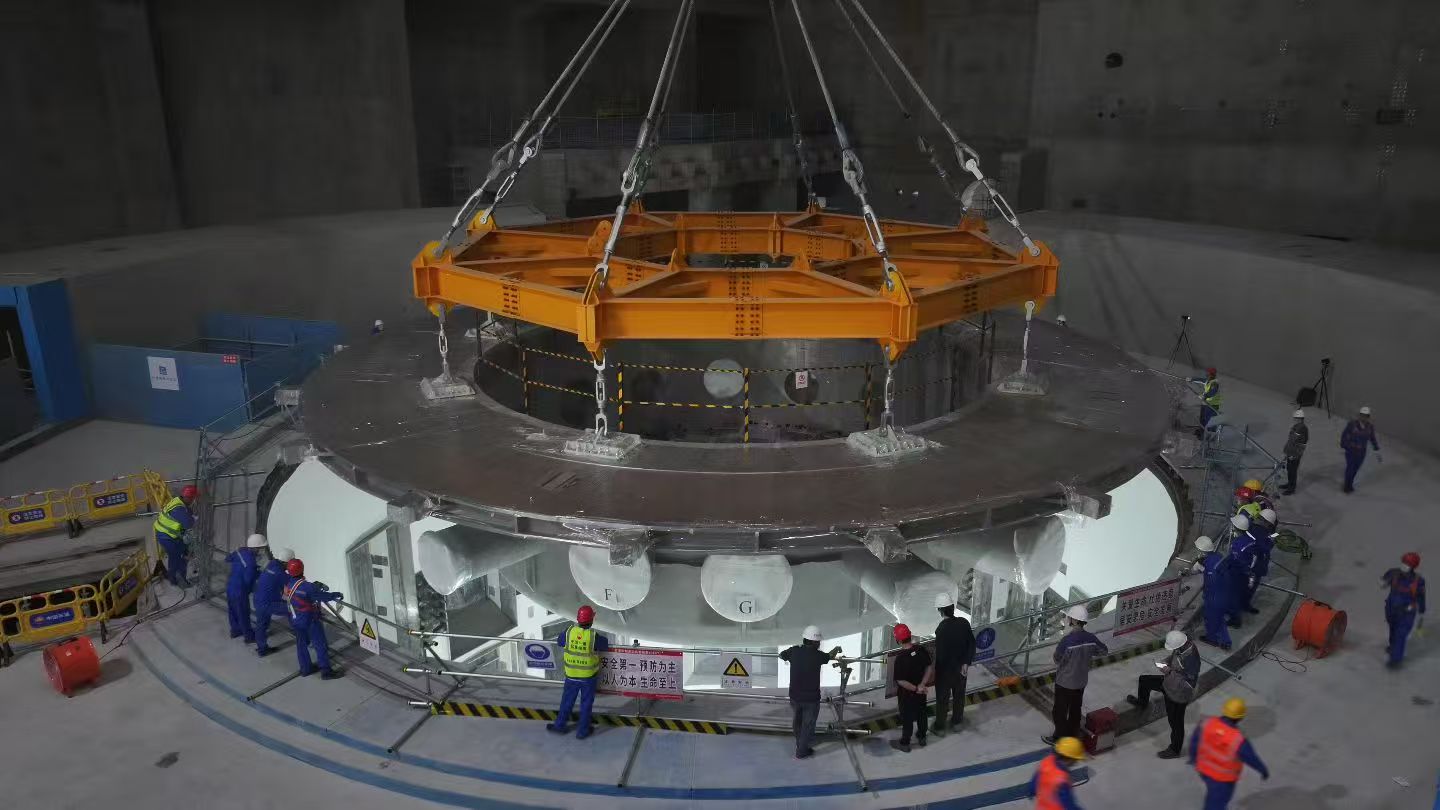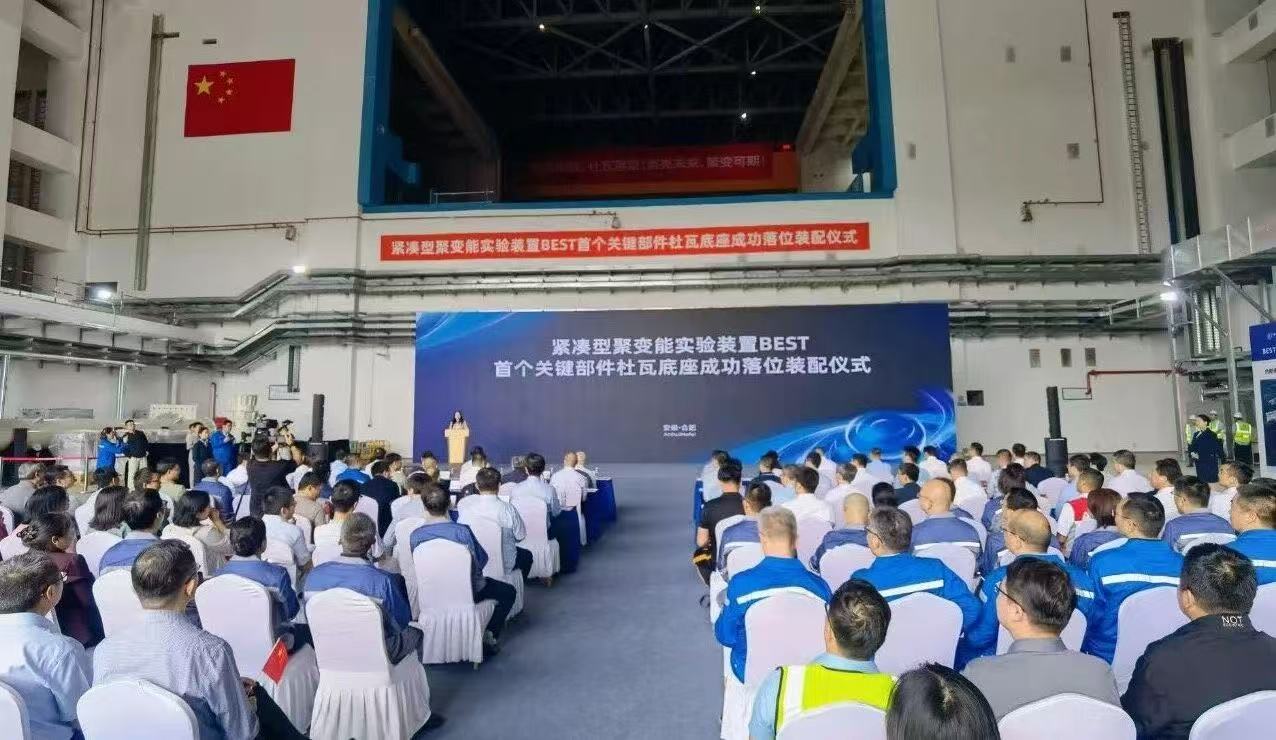
From September 28 to October 1, 2025, the Burning Plasma Experimental Superconducting Tokamak (BEST) — a compact fusion experiment device now under construction in Hefei, Anhui Province — reached a major milestone with the successful installation of its first key component, the Dewar base. To mark this achievement, a placement and assembly ceremony was held on October 1 in Hefei.
The project, led by the research team from the Institute of Plasma Physics (ASIPP), the Hefei Institutes of Physical Science of the Chinese Academy of Sciences, aims to achieve the world' s first electricity generation from fusion power. Unlike previous fusion experimental devices, BEST is designed to demonstrate the actual burning of deuterium–tritium plasma.
Since the project' s full-scale assembly began in May this year, the facility has attracted wide public attention.
At the heart of BEST lies the Dewar, a core component that functions like a giant high-vacuum thermos flask. It insulates the superconducting magnets, which must operate at minus 269 degrees Celsius, enabling them to confine plasma heated to over 100 million degrees.
Weighing over 400 tons, measuring about 18 meters in diameter and 5 meters in height, the Dewar base is not only the heaviest single component of BEST' s main machine, but also the largest vacuum component ever produced in China' s fusion research field.
With the Dewar base installation completed, the assembly of other core components of the main machine will proceed step by step. The BEST device is scheduled for completion by the end of 2027.

The Dewar base was successfully positioned and assembled. (Image by ASIPP)

The Dewar base was inspected before it was seated in place. (Image by ASIPP)

A placement and assembly ceremony for the BEST Dewar base was held in Hefei on October 1 to mark this achievement. (Image by ASIPP)